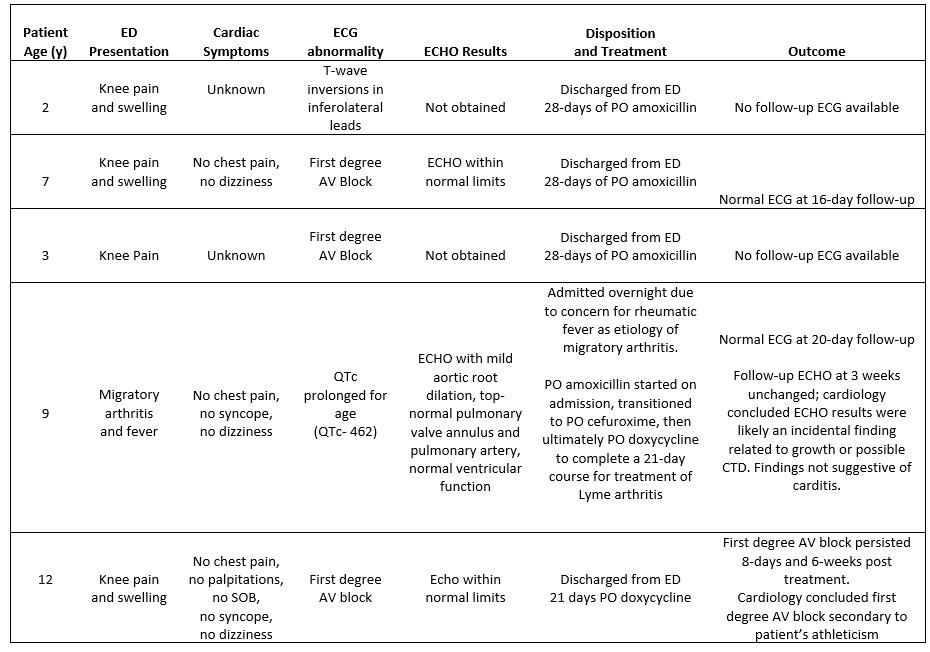Emergency Medicine: All Areas
Emergency Medicine 1
25 - Electrocardiogram Abnormalities in Children with Lyme Arthritis
Publication Number: 25.11

Deborah Hammett, D.O. (she/her/hers)
Pediatric Emergency Medicine Fellow
Nemours Children's Hospital
West Chester, Pennsylvania, United States
Presenting Author(s)
Background:
Classically, the presentation of Lyme disease follows a staged pattern of illness with carditis occurring in early disseminated disease and arthritis in late-stage disease. A more comprehensive understanding of Lyme disease suggests these clinical stages may overlap. Prior research has demonstrated that electrocardiogram (ECG) abnormalities commonly occur in children with Lyme disease presenting with meningitis and facial nerve palsy. However, little is known about the overlap of ECG abnormalities in children with Lyme arthritis.
Objective:
To estimate the prevalence of ECG changes in pediatric patients presenting with Lyme arthritis.
Design/Methods: This retrospective, cross-sectional study was conducted at a tertiary care children’s hospital located in a Lyme endemic area. Patients were identified based on Lyme testing performed in the ED from January 2012 to August 2022 using an electronic medical record search. Children diagnosed with Lyme arthritis by two-tiered serology with ECGs obtained within 2-days of antibiotic initiation were included. Demographic, clinical history, physical examination, and diagnostic testing data were manually extracted. ECGs were reviewed by a study cardiologist, blinded to the patient’s Lyme disease status. Electrocardiographic evidence consistent with Lyme carditis was defined as atrioventricular block, ST-T wave changes, QTc interval prolongation, accelerated junctional rhythm, or right bundle branch block.
Results:
During the study period, 233 patients were diagnosed with Lyme arthritis of which 90 patients (38.6%) had ECGs completed. No significant differences existed in demographic, clinical features, physical examination, or laboratory results between those patients undergoing ECG testing compared to those with no ECG obtained. Of these 90 patients, 5.6% (n=5) had ECG abnormalities: 3 patients were diagnosed with first-degree AV block, 1 patient with QTc prolongation, and 1 patient with ST-T wave changes (Table 1). No clinical or laboratory features in Lyme arthritis patients were associated with an increased likelihood of having an abnormal ECG. All patients with ECG abnormalities were treated with oral antibiotics and none required inpatient admission for carditis. No patients returned for new or worsening cardiac symptoms.
Conclusion(s):
ECG abnormalities in children with Lyme arthritis rarely occur and when present, are not reflective of clinically significant cardiac disease. These results do not support routine screening ECGs on asymptomatic pediatric patients with Lyme arthritis.
